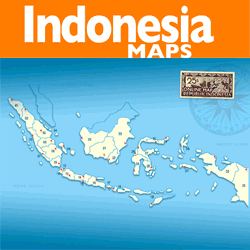Tourism Objects
Lorentz National Park

The Park lies within Irian Jaya Province, and the administrative Jayawijaya, Paniai, Merauke (Southern Division), Fak-fak, Mimika and Enarotali districts. It stretches for over 150km, from the central cordillera mountains in the north to Arafura Sea in the south. Access is by air from Jayapura to Wamena and Timika 04º00'-5º15'S, 137º14'-138º20'E.
The Dutch Colonial Government gave the first protection status in 1919 with the establishment of Lorentz Nature Monument. In 1956, the protected status was abolished due to conflicts with local people over unresolved land ownership. In 1978, it has established as a Strict Nature Reserve (Cagar Alam) by the Indonesian Government with an area of 2,150,000ha wdth. In March 1997 it was declared National park by the Ministry of Forestry, which includes the eastern extension (Mt. Trikora, Mt. Rumphius, Habbema Lake area), coastal and marine areas.
With the total area is 2,505,600ha, about 0.6% of Irian Jaya's total size, the Park can be divided into two very distinct zones: the swampy lowlands and the high mountain area of the central cordillera. The central cordillera itself can be subdivided in the eastern part and the western part on the basis of geology and vegetation types, the north/south line at approximately Kwiyawagi village being the dividing line.
The central mountain ranges are the southern portion of two colliding continental plates, which are causing the mountain range to rise. The lowering and rising of the sea level during the glacial and inter-glacial periods of the Pleistocene, along with continuous activity in the mobile belt which characterizes the contact zone of the two colliding lithospheres plates, has continued to promote the great biodiversity of the island of New Guinea in general, and in the Lorentz area in particular. Large tracts of the mountain range, and especially the area formed by the traditional lands of the Amungme (or Amung) are rich in mineral deposits - especially gold and copper.
The Carstenz or Jaya Peak section of the Jayawijaya Mountain Range still retains small ice caps. It is one of only three equatorial highlands (Sierra Nevada region in the Andes, and Mt. Kenya, Kilimanjaro, Ruwenzori in E.Africa) that is sufficiently high altitude to retain permanent ice, but note that Lorentz glaciers are receding rapidly. Some 3,300ha of snowfields REMAINED IN 1992. The main snowfields comprise five separate areas of ice on the outer margins of Mount Puncak Jaya. These include two small fields, which feed the Meren and Carstenz glaciers, and a small hanging glacier on the Carstenz Pyramid.
Puncak Jaya's summit consists of several peaks (Jayakesuma / Carstenz Pyramid 4,884m, Ngga Pulu 4,862m, Meren 4,808m) that developed from Tertiary rocks (Miocene). This high area was still covered by wide ice caps (13sq.km) in 1936. These ice caps melted down to an area of just 6.9 km in 1972 and further reduced to 3.3 sq.km by 1991. The remaining ice is now divided into three patches the North Wall Firn, the Meren and Carstenz glacier with only 3 sq.km of ice left. Based on climatic data, a deficit mass balance will continue as the future trend.
The lowland area is a wide swampy plain, covered with virgin forest and intersected by countless winding rivers and streams, mostly tidal. The largest of these rivers empty into the shallow Arafura Sea, which separates the island of New Guinea from Australia.
The Regional Physical Planning Program for Transmigration recognized 9 physiographic types and regions (beaches, tidal swamps, meander belts, peat swamps, alluvial valleys, alluvial fans, dissected terraces, mountains and alpine summits) with 13 major land systems.











